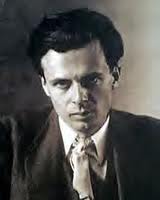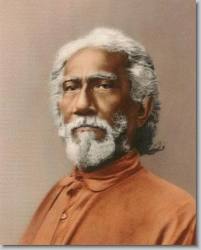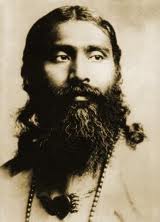Reposted from Dec. 2010
In his Sept. 11, 2010 message, Matthew said:
“The truth is [that] religions were devised to keep you from knowing who you truly are, to keep you ignorant of the universal laws, and to create divisiveness within the populace.” (1)
So bad did the situation of religious division become that, SaLuSa tells us, “throughout your history, religious battles have been at the root of many wars.” (2)
As I understand it, in many of these wars, the controllers funded both sides.
The division and manipulation that Matthew and SaLuSa are referring to are not born of the Truth itself but of a desire to control.
Paramahansa Yogananda explained that religions may argue with each other but “men of realization who have the common knowledge of the same truth do not contradict one another.” It is not they who create dissension. “Their disciples of limited understanding create differences and establish different cults with varying beliefs.” (3)
Having seen the Truth of life, the masters searched for words to describe it to the people of their time. The Truth that lay beyond words and beyond religions has been called the “perennial philosophy” or “ageless wisdom.” One group called it the “divine wisdom” or theosophia. Another called it the “eternal law” or sanathana dharma.
Paramahansa Yogananda’s guru, Sri Yukteswar Giri explained it this way:
“There is an essential unity in all religions; … there is no difference in the truths inculcated by the various faiths; … there is but one method by which the world, external and internal, has evolved; and … there is but one Goal admitted by all scriptures.” (4)
“Only a few specially gifted persons can rise superior to the influence of their professed creeds and find absolute unanimity in the truths propagated by all great faiths.” (5)
Aldous Huxley devoted his life to an explication of it. In one of his statements of it, he developed the notion:
 “Philosophia perennis — the phrase was coined by Leibniz; but the thing — the metaphysic that recognizes a divine Reality substantial to the world of things and lives and minds; the psychology that finds in the soul something similar to, even identical with, divine Reality; the ethic that places man’s final end in the knowledge of the immanent and transcendent Ground of all being — the thing is immemorial and universal.”
“Philosophia perennis — the phrase was coined by Leibniz; but the thing — the metaphysic that recognizes a divine Reality substantial to the world of things and lives and minds; the psychology that finds in the soul something similar to, even identical with, divine Reality; the ethic that places man’s final end in the knowledge of the immanent and transcendent Ground of all being — the thing is immemorial and universal.”
It was to be found wherever humans pondered the meaning and purpose of life.
“Rudiments of the Perennial Philosophy may be found among the traditionary lore of primitive peoples in every region of the world, and in its fully developed forms it has a place in every one of the higher religions. A version if this Highest Common Factor in all preceding and subsequent theologies was first committed to writing more than twenty-five centuries ago, and since that time the inexhaustible theme has been treated again and again, from the standpoint of every religious tradition and in all the principle languages of Asia and Europe.” (6)
He never tired of taking up the theme.
“In Vedanta and Hebrew prophecy, in the Tao Teh King and the Platonic dialogues, in the Gospel accordinto St. John and Mahayana theology, in Plotinus and the Areopagite, among the Persian Sufis and the Christian mystics of the Middle Ages and the Renaissance — the Perennial Philosophy has spoken almost all the languages of Asia and Europe and has made use of the terminology and traditions of every one of the higher religions. …
“The records left by those who have known [the pure state described by the Perennial Philosophy] make it abundantly clear that all of them, whether Hindu, Buddhist, Hebrew, Taoist, Christian or Mohammedan, were attempting to describe the same essentially indescribable Fact.” (7)
This one great Fact of life is known in a moment of enlightenment. Enlightenment itself became known by many names in diverse religions, as John White explains.
“Enlightenment has been given many names. … St. Paul called it ‘the peace of God that passeth understanding’ and Richard Maurice Bucke named it ‘cosmic consciousness.’ In Zen it is satori, in yoga it is samadhi or moksha, in Sufism it is fana, in Taoism it is wu or The Ultimate Tao. Gurdjieff labelled it ‘objective consciousness,’ Sri Aurobindo spoke of the Supermind, mystery schools and occult paths speak of ‘illumination,’ ‘liberation,’ and ‘self-realization.’
“Likewise, enlightenment has been symbolized by many images: the thousand-petalled lotus of Hinduism, the Holy Grail of Christianity, the clear mirror of Buddhism, Judaism’s Star of David, the yin-yang circle of Taoism, the mountaintop, the swan, the still lake, the mystic rose, the eternal flame.” (8)
But the Truth discovered in enlightenment was not different for the people who found it. Said White:
“The perennial wisdom is unchanging; truth is one. That is agreed on by the sages of all major religions and sacred traditions, all hermetic philosophies, genuine mystery schools and higher occult paths. Enlightenment is the core truth of them all.
“Even more broadly, it is the essence of life — the goal of all growth, development, evolution. It is the discovery of what we ultimately are, the answer to the questions: Who am I? Why am I here? Where am I going? What is life all about?” (9)
While masters are many, Sufi sage Hazrat Inayat Khan said, the One who incarnates as all masters remains always the same.
“The Masters have been numberless since the creation of man; they have appeared with different names and forms; but He alone was disguised in them who is the only Master of eternity.” (10)
“If the Masters were not the same in mortal garb, yet in spirit they were one; if it were not so, how could one and the same truth be disclosed in all?” (11)
Each new era and country needed the truth restated, says Hazrat.
“Their messages differ from one another in their outer appearances, each message being given in accordance with the age of man’s evolution, and also in order to add a particular part in the course of divine wisdom. Certain laws and principles were prescribed by them to suit the country where the message was given, the climate, the period, customs, manners and requirements.” (12)
(Concluded in Part 2, tomorrow.)
Footnotes
(1) Matthew’s Message, Sept. 11, 2010, at https://www.matthewbooks.com/mattsmessage.htm
(2) SaLuSa, Feb. 15, 2010, at https://www.treeofthegoldenlight.com/First_Contact/Channeled_Messages_by_Mike_Quinsey.htm
(3) Paramahansa Yogananda, The Second Coming of Christ. Dallas: Amrita Foundation, 1979-86, II, 10.
(4) Sri Yukteswar Giri, The Holy Science. Los Angeles: Self-Realization Fellowship, 1984, 3.
(5) Ibid., 4.
(6) Aldous Huxley in The Perennial Philosophy. New York, etc.: Harper and Row, 1970; c1944, vii.
(7) Aldous Huxley, “Introduction” to Swami Prabhavananda and Christopher Isherwood, trans., Bhagavad-Gita. The Song of God. New York and Scarborough: New American Library, 1972; c1944, 11-2. [Hereafter BG.]
(8) John White, “Introduction” to his What is Enlightenment? Los Angeles: Tarcher, 1984 xvi-xvii.
(9) Ibid., xi.
(10) Hazrat Inayat Khan, Way of Illumination. Delhi, etc.: Motilal Banarsidass, 1988, 31.
(11) Loc. cit.
(12) Ibid., 33.



